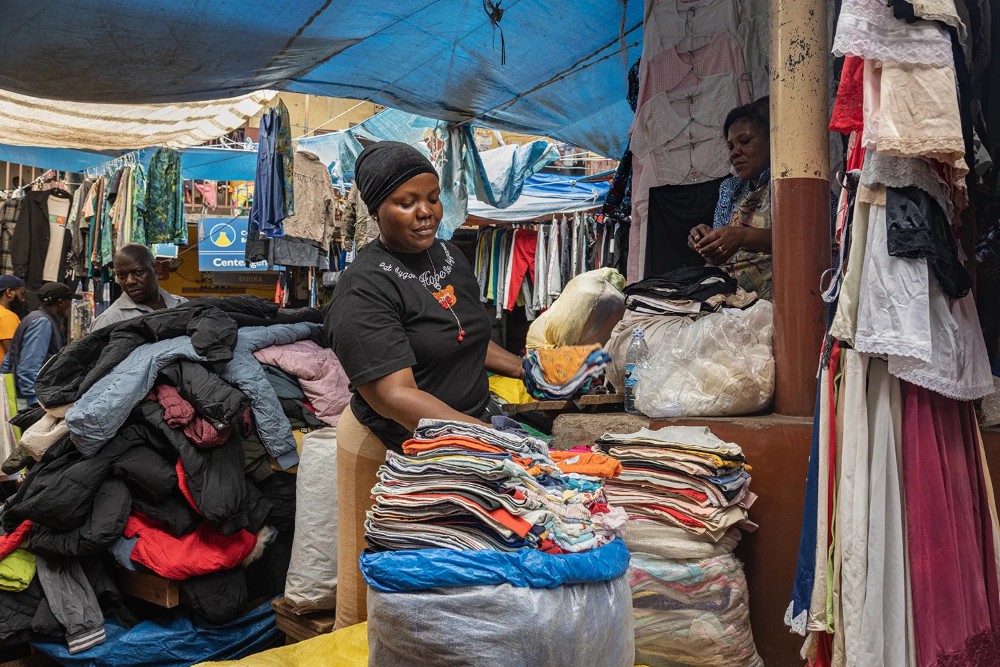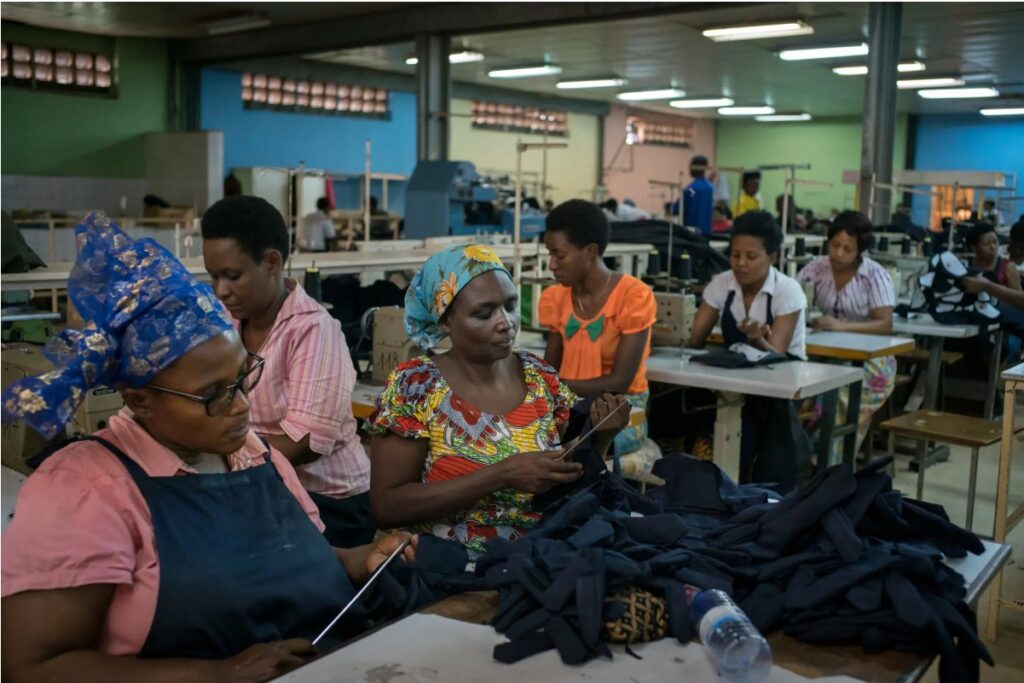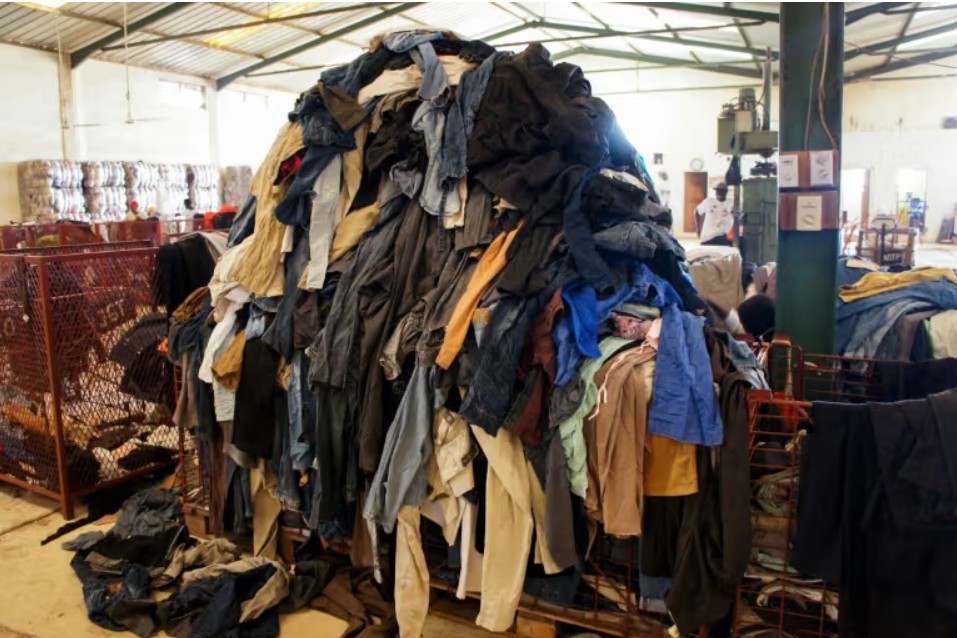Part 2 – Reuse
Anyone who knows me personally knows I am a perfectionist – and that is not a good thing. When I am going to dispose of something, I need to get rid of it the “right” way, which means that the process of researching my options and truly comprehending the pros and cons of each course of action results in complete analysis paralysis and overwhelm on my part. Add all of the depression and lack of motivation that results from the death of a parent, and you’ve got a perfect storm of “not going to happen.” My poor husband has been a champ through this process, biting his tongue at the growing piles of bags and boxes of items “to be sorted” in our house over the last year.
To make matters worse, the avenue I thought I would have available to me for my mom’s clothes was apparently no longer an option. Several years ago when I was Marie Kondo-ing my own wardrobe, I learned about a thrift store in Pittsburgh’s North Hills that sent donated clothing they couldn’t sell in their store 1) to developing countries if it was wearable or 2) to be turned into rags if it wasn’t. [1] I wanted to support this thrift store again because of their mission to help trafficked women, but I was disappointed to see that (at least according to their website) the “developing country” option didn’t seem to be part of their process anymore.

Image Credit: [2]
Noblesse Oblige
I wanted to find a place that included the step of sending imperfect but wearable items to foreign markets, and I wanted to do that before the date I had scheduled with my best friend to sort through all the clothes (since he was also going to take said clothes with him and drop them off wherever they needed to go). The day arrived, and I had not done that research, but apparently that was not the worst thing because I quickly learned that that approach may not be as good as it appears on the surface. My friend explained that donating clothing to these countries undercuts their ability to develop apparel industries of their own – and he later shared with me a 2017 New York Times article that went into more detail about why that is the case.
In Kenya, these second-hand clothes are referred to as the “clothes of dead white people.” They are incredibly cheap to buy and redistribute, making them the primary source of clothing across many African countries, but they are also not guaranteed to be good quality or in good condition. According to the article, East Africa imported some $151 Million worth of used clothes and shoes from countries in Europe and North America in 2015, but it is believed that – if allowed to develop – a textile and garment industry in the region could instead export $3 Billion annually. Developing domestic manufacturing and finding domestic buyers is difficult, though, when cheap foreign products are available. Case in point: at the time of the NYT article, Kenya did have a small clothing manufacturing industry, but much of it was focused on exports to the US because the products they were making were too expensive for domestic markets, which were flooded with cheap, second-hand clothing from the US. [3]
As a result, some East African countries enacted heavy tariffs on second-hand clothing in order to encourage clothing manufacturing within their own borders – tariffs so high that they effectively constituted a ban on those imports altogether. When it comes to tariffs, many Americans (including some in government) are currently getting a crash course in what they are and how they work. [4] This tax imposed on foreign goods used to protect domestic industries can be effective in supporting its stated goal in very specific situations, but at the end of the day tariffs are blunt tool with significant drawbacks: they ultimately shape consumer behavior by reducing the affordability of foreign products. And now may be a good time to get a better sense of international power dynamics and unintended policy consequences through this relevant example.

Image Credit: [5]
Trade Warfare
With an effective ban on the primary source of clothing in many of these countries, clothing resellers have found themselves out of work, with their supplies dried up and/or customers who can no longer afford items that are significantly more expensive than they used to be. Meanwhile in America, textile association SMART (mentioned in last week’s post [6]) stated that some 40,000 American jobs would be at risk without this East African export market for secondhand clothes, and that the clothes would instead wind up in landfills. Given this threat to American jobs, the United States fought back in the most effective way possible: withholding aid.
The African Growth and Opportunity Act (AGOA) of 2000 was designed to support economic growth in sub-Saharan Africa by providing tax-free access to thousands of products in the US market. [7] However, with the heavy tariffs placed on second-hand clothes from America, the US threatened to remove any countries upholding these tariffs from AGOA. Several members of the East African Community (such as Rwanda, Uganda, and Ethiopia) have upheld restrictions on these imports, but the tactic worked on Kenya, which was benefitting from their previously mentioned textile exports to the US. Meanwhile, clothing donations are still getting smuggled into countries where they are restricted because they remain cheap and available alternatives to new clothing – and the illegal trade itself provides income for those willing to do it. [8]
East African countries committed to building up their own manufacturing capabilities are doing what they feel is best for establishing their long-term economic wellbeing. Kenya is clearly concerned with preserving its current (though limited) economic wellbeing. In this situation, it is clear that pros and cons must be weighed on long and short timeframes, on macro and micro scales. A tariff intended to support a developing industry will ultimately hurt consumers of that product as prices increase – that is a fact. While there may be long-term economic benefits for the country enacting the tariffs, that shift will take a very long time. What that means is that tariffs, if implemented, need to be timed appropriately and paired with strategic economic support for consumers as well as for the development of manufacturing capabilities and supply chains that will support this new industry.

Image Credit: [9]
Once our donations are literally out of our hands, their destination is figuratively out of our hands, but it is important to remember that a donation, however well-intended, may not necessarily represent a net good for the people who might receive it – the benefit is highly dependent on the situation and information to which we may never have access. So where does that leave those of us in the United States and other affluent countries who have clothes to donate? Our goal should still be to reduce our consumption in the first place (recognizing that there are negative economic consequences of that choice here), buying good quality items and caring for them over time, finally donating them when necessary.
The last-resort “R” (recycling) will be up for examination next week, and we’ll dive into why it is neither feasible nor a good idea to the extent we might think. In the meantime, since tariffs are such a hot topic right now, I’d love to hear your thoughts about the justification of short-term hardships in the name of economic progress – and who should get to make those decisions.
Thanks for reading!
[1] https://repurposedpgh.com/
[2] https://foreignpolicy.com/2024/05/29/the-end-of-secondhand-clothes/
[3] https://www.nytimes.com/2017/10/12/world/africa/east-africa-rwanda-used-clothing.html
[4] https://www.cnn.com/2025/02/04/business/what-is-tariff-definition-meaning
[5] https://www.nytimes.com/2017/10/12/world/africa/east-africa-rwanda-used-clothing.html
[6] https://radicalmoderate.online/clothes-of-dead-white-people-part-1/
0 Comments